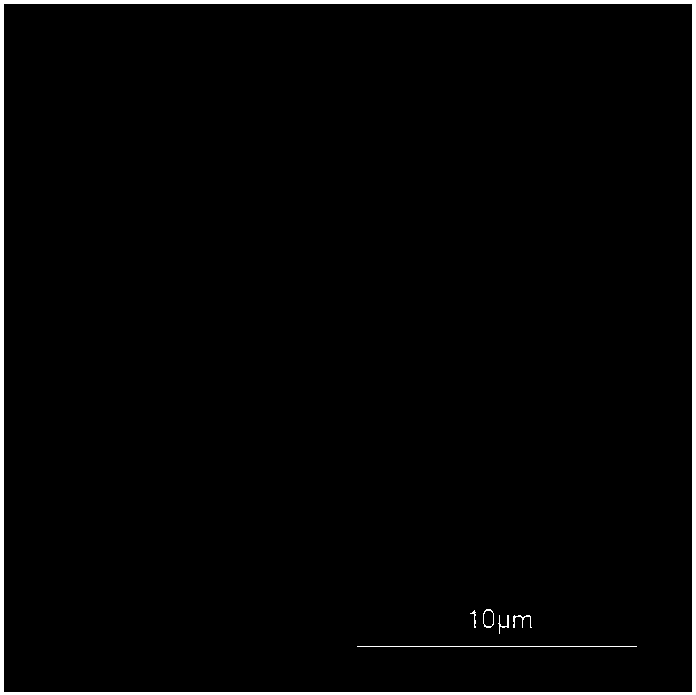Method for reducing CRISPR/Cas9 mediated embryo gene editing missing rate
An embryonic gene and editing technology, applied in the field of off-target rate of embryonic gene editing, can solve problems such as insufficiency, limited efficiency and accuracy, and off-target, and achieve the effects of wide application, easy manipulation, and reduced off-target mutation rate
- Summary
- Abstract
- Description
- Claims
- Application Information
AI Technical Summary
Problems solved by technology
Method used
Image
Examples
Embodiment 1
[0033] In this example 1, discarded eggs that cannot be fertilized normally in conventional IVF were selected, and ICSI method was used to promote the fertilization of these eggs and develop into diploid embryos. We have confirmed that the combined injection of intracytoplasmic sperm injection in discarded eggs can Efficient sgRNA-E with Cas9 mRNA targeting human encoding recombination-activated gene 1 (RAG1). Subsequently, the T7EN1 cleavage method and deep sequencing were used to detect the targeting effect and off-target efficiency of Cas9 / sgRNA technology in gene editing of human diploid embryos.
[0034] 1.1 Using the method provided by the present invention, using the CRISPR / Cas9 system to perform gene editing on human diploid embryos derived from discarded eggs:
[0035] 1) Sources of discarded human eggs:
[0036] All couples of infertile patients signed the informed consent form for the donation of discarded eggs due to unfertilized eggs during the in vitro fertiliza...
Embodiment 2
[0077] Reducing off-target damage using a Cas9 nickase / dual sgRNA strategy
[0078] In this example, an editing strategy requiring the simultaneous application of sgRNAs at 2 adjacent positions was attempted to be applied to human diploid embryos. We chose sgRNA-E and sgRNA-1, which are 11bp apart. Four (#84-87) and three (#95-97) human diploid embryos were collected from two independent experiments. Whole-genome DNA was amplified by PCR and used for T7EN1 digestion analysis, and restriction bands (#84-87, #95) were found in 5 samples ( Figure 9 &10 and Table 2). This result is consistent with previous studies: the dual sgRNA strategy has a higher targeting efficiency than the single sgRNA strategy (11 / 29vs 5 / 7) (Table 2). The results of direct sequencing of PCR products showed that the TA clone product had multiple peaks, further confirming this result ( Figure 11 &table 3). Likewise, targeting efficiencies ranging from undetectable 0% to 100% (#84) also indicated that...
Embodiment 3
[0083] The CRISPR / Cas9 system mediates complex genome engineering in human embryos
[0084] To verify whether the CRISPR / Cas9 system can mediate multiple gene editing in human embryos, we designed two sgRNAs targeting the UBE3A gene (encoding ubiquitin protein ligase E3A), namely UBE3A-sgRNA-1 and 2, together with RAG1- sgRNA-E and 1 were simultaneously microinjected into human embryos. Four (#147-150) and six (#151-156) embryos were collected from two independent experiments. All 4 embryos in the first experiment successfully completed whole-genome amplification, and 4 out of 6 embryos in the second experiment successfully completed whole-genome amplification, and the amplified DNA was subjected to T7EN1 digestion experiment. The results show( Figure 15 &16): Of the 8 embryos, 5 (#147-150, 152) had RAG1-targeted restriction bands, and 3 (#149-150, 152) had UBE3A-targeted restriction bands. It is worth noting that 3 out of 8 embryos (#149-150,152) had both RAG1 and UBE3A m...
PUM
 Login to View More
Login to View More Abstract
Description
Claims
Application Information
 Login to View More
Login to View More - R&D
- Intellectual Property
- Life Sciences
- Materials
- Tech Scout
- Unparalleled Data Quality
- Higher Quality Content
- 60% Fewer Hallucinations
Browse by: Latest US Patents, China's latest patents, Technical Efficacy Thesaurus, Application Domain, Technology Topic, Popular Technical Reports.
© 2025 PatSnap. All rights reserved.Legal|Privacy policy|Modern Slavery Act Transparency Statement|Sitemap|About US| Contact US: help@patsnap.com



